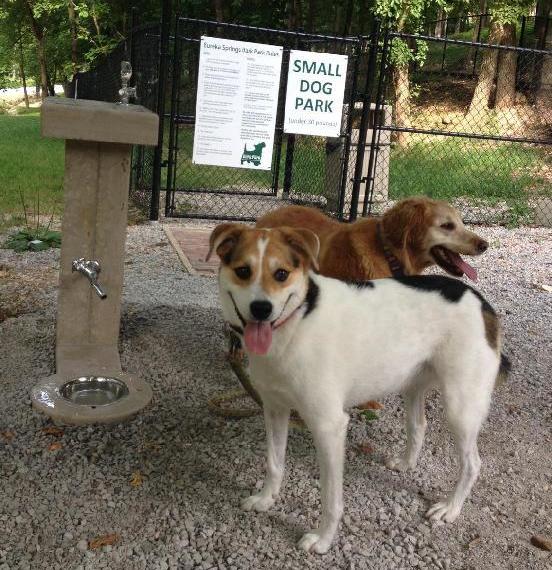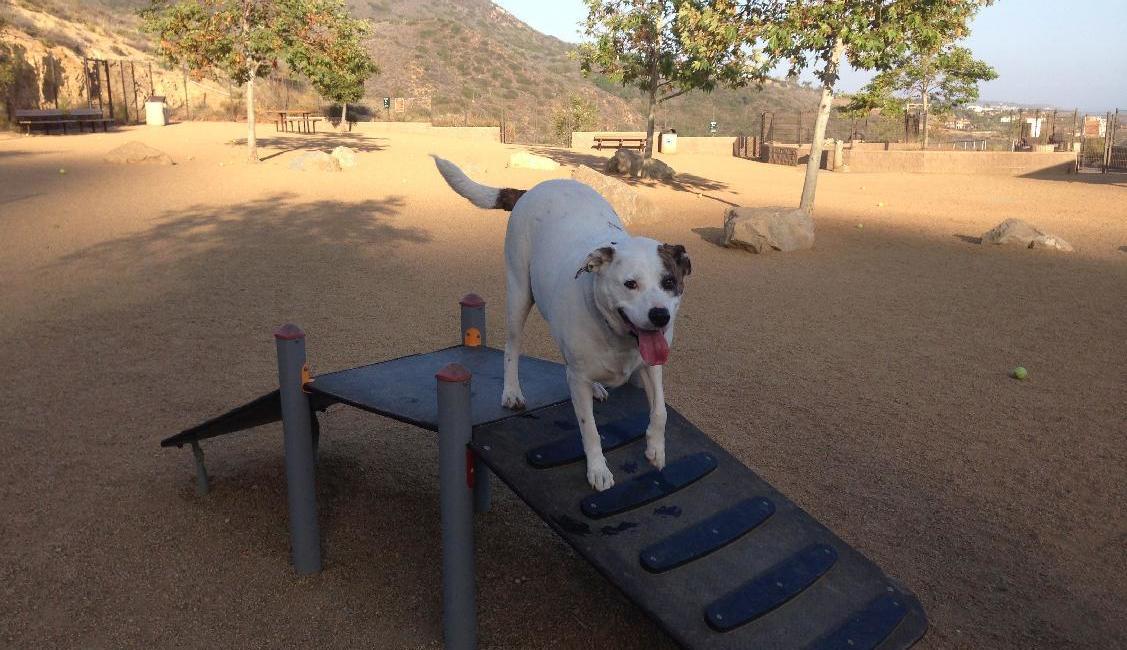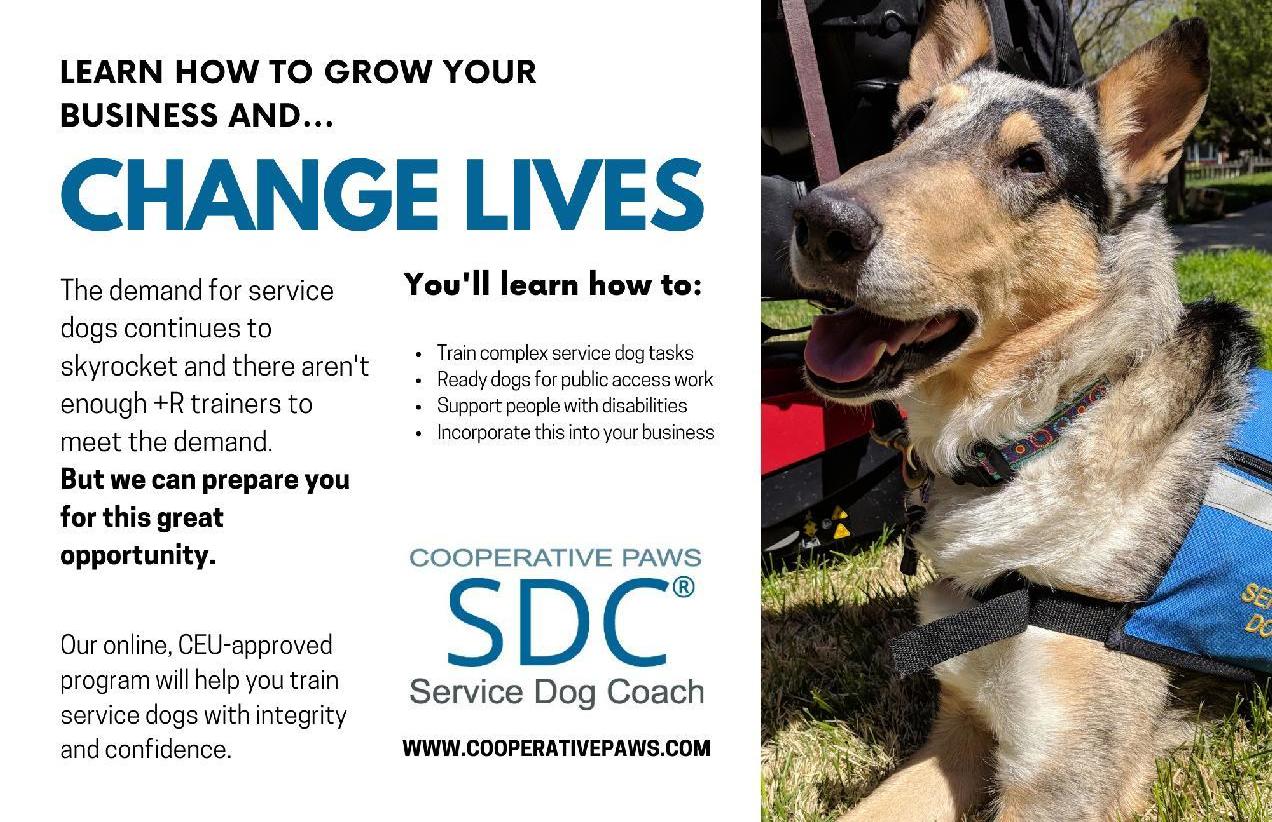
13 minute read
DOG PARKS: THE GOOD, THE BAD, AND THE REALITY
c a n i n e Dog Parks: The Good, the Bad, and the Reality
Rachel Brix looks into the pros and cons of dog parks, and sets out recommendations to ensure optimal safe and enjoyable use for all parties, as well as highlighting potential red flags
Advertisement
© Susan Nilson Not all dogs are dog park dogs: dog parks should be avoided by shy or fearful dogs, dogselective, dogreactive dogs and dogaggressive dogs [sign translates from Finnish as “Large Dogs”]

The Experimental Dog Park at Ohlone Park in Berkley, California, which is generally acknowledged as the first leashfree American dog park, was created in 1979. Since then dogs parks have grown exponentially in popularity.
According to the most recent report issued by the Trust for Public Land (TPL) (2019), dog parks “are among the fastest growing park amenities in the combined parks systems of the 100 largest US cities. There are currently 810 dedicated dog parks in the 100 largest cities, an increase of 37 over last year [2018].” TPL (2019) also reports a 74% increase in dog parks in from 2009 to 2019. While the numbers are
Not all dogs are “dog park dogs” so it’s important not only to know if your dog is a good fit, but also if the other dogs there are good fits for the park – and for your dog. Dog parks are most definitely not the place to teach a dog about socialization, or attempt to socialize a dog who is not socialized to other dogs or people.
© Rachel Brix Truly dogsocial dogs are usually the best fit for dog parks and it is important for owners to objectively assess and make decisions based on what type of dogs they have whether or not they would be successful in that type of environment
steadily increasing in larger cities, many suburban and rural areas are still in need of safe spaces for dogs to run and play although those numbers are increasing as well.
Also according to TPL’s report (2019), the cities with the most dog parks include New York with a whopping 125! Portland and San Francisco are tied for second at 35 in each city, and Las Vegas and Chicago round out the top five cities with 25 each.
Although the number of dog parks is consistently increasing due to need and popularity, not everyone thinks dog parks are a good idea. Unfortunately many of the horror stories about dog parks get the most press, and the smaller success stories often go unnoticed.
For example, KGTV Channel 10 News (ABC) in San Diego ran a story with the headline, Beloved Family Dog Attacked and Killed at Santee Dog Park in 2019. Although clearly tragic, there was no separation in design of the park between the larger 70pound shepherd mix and the muchsmaller victim. Separation of small and large dogs is key in dog park design.
Also troublesome was the presence of a 3yearold girl who bore witness to the attack on her family’s dog. Most dog park rules prohibit small children from entering dog parks.
Success Stories
And then there are the positive stories which far outweigh the negatives. Having spearheaded the committee that built Carroll County Arkansas’ first and only dog park, I’ve seen a lot of what dog parks can do for dogs and their humans. The small tourist town where the dog park is located has small lots, mountainous terrain, and fencing restrictions as a National Historic District, so a dog park is a muchneeded amenity. Take a young local woman for instance, living in a small rental unit while her husband was on a work visa, who knew she needed a safe place to exercise their active and frustrated Siberian husky. She was relieved to learn of the dog park and decided to start making routine trips. Their dog became much calmer and more relaxed with regular visits.
And there’s the middleaged couple who were considering giving their terrier/border collie adolescent back to the shelter, but once they started visiting the dog park every day and saw a decrease in undesirable behaviors, they changed their minds.
Or the shelter volunteer who brings a senior mixed breed who’d spent more than three years in the local shelter so he can get exercise and out of the confines of his kennel. Doing so also allows her to network with other dog lovers to try and find him his forever home. On any given day there are many stories of love and success at our local dog park. Offleash dog parks benefit both dogs and people by providing socialization opportunities and health benefits. According to the Humane Society of the United States (HSUS) (n.d.), “With dogs as social lubricants encouraging conversations among strangers, people in the community get to know each other and share information about responsible pet ownership.”
Dogs also get the opportunity to interact with other dogs and people besides their immediate family. With pet and human obesity at record levels, dog parks provide the opportunity for exercise and wellness by encouraging people to spend quality time with their dogs.
According to a recent Harvard Medical School study (2020), we can reduce our blood pressure and lose weight by having a dog because we are more likely to get the recommended amount of exercise each week. The Harvard report (2020) further shows dog parenting also can reduce anxiety, depression, stress, and loneliness. In 2013, the American Heart Association published a finding that dog ownership is linked with a decreased risk of heart disease (Levine et al., 2013).
Dog parks also provide a great opportunity to promote and model responsible pet ownership by having a dedicated space with sensible rules that include manners (i.e., no excessive barking) and requirements pertaining to vaccinations, pet licenses and spay/ neuter.
The Bad
The New York Times published an op ed piece last year that caused quite a stir. In her piece, Lowrey (2020) contends that “[t]here is nothing natural, however, about dogs that aren’t familiar with one another to be put in large groups and expected to play together.” She further points out, “[t]here is no shame in not surrendering your dog to what has become the quintessential urban dog experience: running with dozens of strangers in a small, smelly pen as people stand by, looking at their phones or gossiping.” (Lowrey, 2020).

© Susan Nilson
Problems at the dog park are usually due
to issues such as: • Dogs being there who should not be. • Owners not being versed in canine body language. • Owners not paying attention to their dogs’ behavior (i.e., socializing with other humans or on their phones). • Owners not removing their dogs prior to escalation of inappropriate behaviors. • Owners not removing their dogs when they are showing signs of discomfort such as fear, anxiety and stress (FAS). • Design and/or maintenance issues with the park itself.
Since we have no control over what others
do/don’t do, the best ways to avoid issues at the dog park is to: • Determine whether your dog is a good fit for dog parks. • Make sure you have a solid recall with your dog. • Assess the situation prior to entering. Come back later if necessary. • Read and follow all posted rules. • Monitor your dog for signs of FAS. • Monitor other dogs for FAS. • Exit the dog park quickly and calmly if necessary.
Welldesigned dog parks should have at
minimum: • Secure fencing. • Separate areas for small and large dogs. • Easily accessible and doublegated entrances and exits. • Sensible rules clearly posted. • Ample shade. • Dog waste stations. • Trash receptacles. • Parking.

General Guidelines for Dog Park Use
© Can Stock Photo / Smitty411
While most dog parks are selfpolicing and therefore much more likely to promote a lax environment, many experts were quick to publicly respond to Lowrey’s column. These included Dr. Marc Bekoff, who said Lowrey’s article was “misleading” and pointed out that she “goes on to explain we need to be sure to listen to our dogs.” Bekoff writes: “As in all interactions between humans and dogs, we must take into account the dog's point of view—what they want and need—and listen to them very carefully. Let your dog tell you what they want to do and what they're feeling. Let them have a say about the situation at hand. And let them be dogs and engage in dogappropriate behaviors as much as possible.”
Not all dogs are “dog park dogs” so it’s important not only to know if your dog is a good fit, but also if the other dogs there are good fits for the park – and for your dog. Dog parks are most definitely not the place to teach a dog about socialization, or attempt to socialize a dog who is not socialized to other dogs or people – a common misconception and recipe for disaster. Since most dog parks aren’t staffed, it’s the responsibility of the guardians to ensure their dogs are behaving appropriately and following the rules, which are usually posted at entrances. Unfortunately, not everyone follows the rules, and things can happen. But this is the case in any park, whether it’s a child’s playground, a disc golf course at a public park, or a dog park. Each guardian must be aware of not only the body language of her dog, but also that of the other dogs in the park, which is why cell phones, books and lots of humanhuman socializing are discouraged. Anything that detracts from being able to actively supervise your dog is a big nono at the dog park.
The Reality
Again, not all dogs are dog park dogs. Dog parks should be avoided by shy or fearful dogs, dogselective, dogreactive dogs and dogaggressive dogs. Dogtolerant dogs may be a good fit for certain parks in certain situations, but owners would want to avoid flooding to prevent a dogtolerant dog from becoming lessthantolerant. Not to mention, if a dog is merely tolerating other dogs, that dog might have a lot more fun doing a solodog activity instead such as: scent work, trailing and locating or agility. Truly dogsocial dogs are usually the best fit for dog parks. It’s important for owners to objectively assess what type of dogs they have and make decisions on dog park attendance based on whether or not their dog would be successful in that type of environment.
Moreover, it’s important to consider that even though there are usually posted rules, not all guardians will follow them. Observe the situation before you go in. Are the dogs loose and playful with guardians engaged or tense and rough with a lack of supervision? If your dog is dog social but guards resources and one owner is playing ball or disc inside the park or another is scatter feeding, you might come back at a different time or day. Also, the dog park is no place for small children. Although many dogs may be socialized to children, many are not. Additionally, it’s unrealistic to expect that people would be vigilant about watching their dogs if they also must be watching their small children.
It’s always better to leave before a situation goes south than to hang around and hope the other dog(s) leave. Confronting other dog guardians about their behavior (i.e., nose stuck in their kindle or smartphone) or their dogs’ behavior (your dog is humping my dog, your dog is growling) is illadvised. First, that interaction detracts from both of you paying attention to what your dogs are doing and second, that conversation could escalate quickly and turn ugly.
Once inside, be sure to remain vigilant in watching not only your own dog for signs of discomfort and stress, but also that of other dogs. While a main point of going to dog parks is for appropriate play among dogs, many owners may not know what appropriate group play looks like. In short, dogs playing appropriately are loose and wiggly. Appropriate play may include vocalizing, chasing and rolling around on the ground. However, watch to see that the chasing doesn’t become aggressive or too onesided or one dog doesn’t always keep pinning another to the ground. Dogs who are playing appropriately selfseparate and reengage. A good way to tell if both dogs are enjoying the romp session is to perform a consent test. Call the dogs off: if they both reengage appropriately they’re both into it. If not, they aren’t.
Some parks may have equipment for dogs to climb on, through,
over, under; water features and/or water fountains. While most dog parks have seating for humans, ideally sitting and congregating should be actively discouraged. Everybody should keep moving to help ensure active supervision.
Community
Ultimately, dog parks are good for dogs, people and communities. But getting a dog park built can be a long process, oftentimes because of the challenge of securing property that is unrestricted and affordable. We were privileged our Parks Department already had a dog park in its Master Plan, just no one to lead the charge. There was opposition, though, so we had to make our case to the City Council, and we ultimately prevailed.
We were fortunate we ended up with three choices in our very dogfriendly town: a vacant hillside inside an existing park area downtown, property contiguous to the local cemetery, or a sizeable parcel inside our main city park located a few miles from downtown.
We ended up choosing the vacant hillside for many reasons. One, it was “free” in that Parks already had control over its usage. And this spot had two great things going for it from the outset: its own parking lot and a very central location to the hustle and bustle of our quaint tourist town, so it’s also very walkable. Our small grassroots committee of volunteers was able to raise enough money to purchase all the fencing, waster stations, a few benches and signage; we erected all the fencing ourselves and opened the Eureka Springs Dog Park just 22 short months from our very first meeting. The Parks Department agreed to maintain the park and donations are still actively solicited for improvements. We added and dedicated a water fountain on the first anniversary.
TPL’s Dog Parks 101 (2019) has extensive information and resources for building dog parks. But ultimately, whether or not we visit dog parks – and stay at any given dog park – should always be up to our dogs. n
References
Bekoff, M. (2020). Let Your Dog Tell You If They Want to Go to a Dog Park. Psychology Today Harvard Medical School. (2020). Get Healthy, Get a Dog: The health benefits of canine companionship. Boston, MA: Harvard Health Publishing Levine, G.N., Allen, K., Braun, L.T., Christian, H.E., Friedmann, E., Taubert, K., Thomas, S.A., Wells, D.L. & Lange. R.A. (2013). Pet Ownership and Cardiovascular Risk: A Scientific Statement From the American Heart Association. Circulation (127) 23 Lowrey, S. (2020). The Dog Park Is Bad, Actually. New York Times The Humane Society of the United States. (n.d.). Dog Parks and Their Benefits Trust for Public Land. (2019). Dog park rankings for the 100 largest U.S. cities
Resources
Chen, M. (2019). Beloved family dog attacked and killed at Santee dog park. ABC 10 News San Diego Eureka Springs Bark Park Experimental Dog Park Trust for Public Land. (2019). Dog Parks 101, 2019
Rachel Brix BSEd CPDT-KA is Fear Free certified and has been working with dogs and teaching people for over 20 years. Also a writer and speaker, she has spoken twice at the annual APDT Conference and has been nominated for several Dog Writers Association of America Awards. She and her husband own and operate Percy’s Playground Canine Enrichment Center, a boarding and training facility in Eagle Rock, Missouri.











